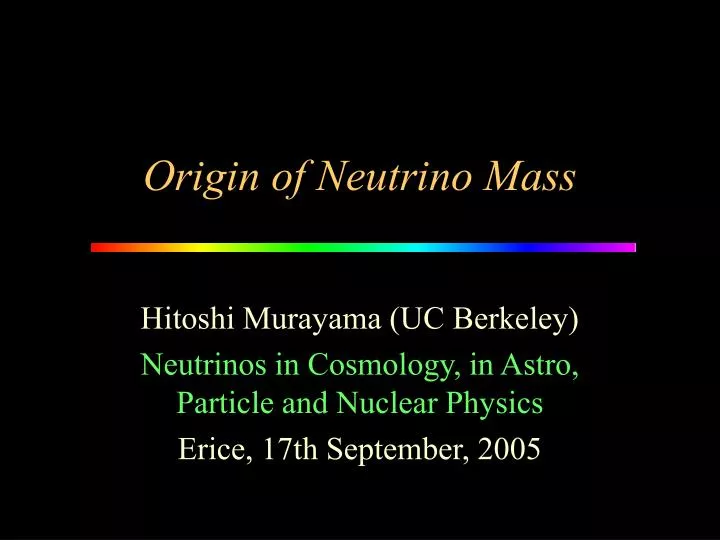
Neutrinos are also released when cosmic gamma rays collide with the Earth's atmosphere. Also, significant sources of neutrinos are supernova explosions of distant stars, background radiation from the universe or reactions from nuclear power plants. The vast majority of neutrinos that reach the Earth come from nuclear reactions that take place inside the Sun. Huge detectors are able to find some neutrinos. One billion of these neutrinos pass through the Earth without reacting with anything (they may be passing through your hands right now!). It is estimated that the Sun produces about 1038 neutrinos per second (That's a lot!). Two years later, however, another much more massive electrically neutral particle was discovered that was also called neutron ( a name it has retained to this day) and to distinguish it, the Italian physicist Edoardo Analdi jokingly called it neutrino in an informal conversation with Enrico Fermi.įermi, who was a physicist of great prestige, liked the name and adopted it to talk about the particle from 1932 onwards. Its existence was proposed in 1930 by the Austrian Wolfgang Pauli to explain a phenomenon called beta disintegration, which he initially called neutron. The name was given to Italian physicists who presented it as a diminutive of the neutron. When a proton is transformed into a neutron (electrically neutral) or a neutron into a proton, this mutation is accompanied by the emission of a negative or positive electron and a neutrino (or an"antineutrino").

And yet a neutrino emitted by the Sun has a 100 million chance of stopping on Earth.Įmitted by stars and the atmosphere, neutrinos can also be created by radioactivity called beta, as in nuclear power plants. The neutrino, which has intrigued physicists since the 1960s, has no electrical charge and can thus pass through walls.Įvery second, 66 billion of these particles pass through the equivalent of a human fingernail. There was no way to prove its existence, but there was reason to believe in an abundant but imperceptible phenomenon.

Billions of these tiny particles pass through our body at all times, but they are imperceptible, although they do not cease to interact with matter, but they are very small, impossible to measure in the 1930s, when physicist Wolfgang Pauli raised the presence of particles without mass, charge or significant interaction that, however, had interference in the loss of energy and matter of neutrons.Īfter photons, neutrinos are the most abundant particles in the universe some were created from the Big Bang, others are generated in the various processes of the earth and space, both small and large scale - from a stellar explosion to inside our bodies, when an average of 5,000 neutrinos are released per second when a potassium isotope decomposes.ĭespite the abundance of these particles in the universe, their existence was in doubt for decades. In fact, if they were not needed to explain neutron decay, we could do without them. Neutrinos are very, very small particles, like electrons, that move almost at the speed of light, and interact with almost nothing in the universe. This is why they are known as 'ghost particles'. They have no electrical charge and hardly any mass.īy not interacting electrically with the atoms, they can cross the matter without being disturbed.

They are elementary because they are not made up of smaller particles.

They are extremely abundant elementary particles in the Universe that move almost at the speed of light and interact with almost nothing in the Universe. The neutrino, elementary particle of matter, is a billion times more numerous in the universe that each of the components of atoms, but it is still incredibly difficult to detect.


 0 kommentar(er)
0 kommentar(er)
